|
I am delighted to announce the launch of my new video series, "The Creative Revolution." You are a part of that revolution! Once you have grasped and applied the ideas in these videos, you will be able to tap into a vast reservoir of creative power in ways that will have a profound and lasting impact on the quality of your life.
For me, this is the culmination of over three decades of exploring the experience of creative inspiration and studying the people most familiar with this experience: artists, inventors, authors, scientists, explorers and innovators. What I have discovered in my research is that the creative power unleashed during moments of inspiration is essentially limitless, as well as accessible to virtually every human being. Inspiration can open the door to any form of creative power, which means that: If you can create even a single moment of inspiration, the power to create virtually anything will be at your disposal. Individuals who have experienced inspiration on a regular and consistent basis have discovered how to create the experience itself. That ability is an art, called "Inspiring"--one that you will learn and master, with the help of these videos. Here, I will be sharing the art of Inspiring with you. I am honored to be able to introduce you to some of my most important discoveries about the relationship of inspiration, genius, and creative power, as well as the most effective practices I have found for connecting with creating genius and expanding our creative power through moments of inspiration. The first video gives an overview of the series and focuses on five major ideas that underlie the practice of Inspiring. Together, we will be embarking on a journey into the heart of creative inspiration and we will connect to the vast source of creative power locked away within each one of us. Your comments and questions are always welcome. I look forward to sharing this great adventure with you. The Creative Revolution...starts now.
2 Comments
Sometimes an artist or musician resonates with your sensibilities and passions in a way that sets off a chain reaction of inspiration. For me, Robbie Robertson, who died on August 8, 2023 at the age of 80, was one of those artists. His music and life story continue to inspire me on an almost daily basis.
Robertson's influence in my life began when I was 19. That is when I first discovered his enormous talent and charisma. As lead guitarist and primary songwriter for the seminal rock group, The Band, Robertson helped revolutionize American popular music with compositions like "The Weight," "Up on Cripple Creek," and "The Night They Drove Old Dixie Down." Seeing his performance in The Last Waltz, the Martin Scorsese film documenting the Band's final concert in November 1976, I felt an instant and deep connection to Robertson's inspiring musicianship and compelling presence. From the first chords I heard him play, I could feel the depth and intensity of this man's love affair with music. That had a profound impact on my own desire to create and express myself through music--a desire that led to the founding of Global Chant and everything that came with it, including The Chanter's Guide and the countless chants I have played and composed. The most important way that Robbie Robertson shaped my experience as a chanter was by showing me how powerful music can be when expressed in a passionate and inspiring manner. Here, I want to honor Robbie Robertson by focusing on three of my favorite moments from The Last Waltz. This tribute will feature video clips of some extraordinary guitar playing: 1. "It Makes No Difference" In an interview with Rolling Stone, Robertson said that he wrote this song, a genuine and poignant expression of heartache, to feature Rick Danko's plaintiff vocals and some exceptional instrumentation, including a tradeoff of solos between Garth Hudson on sax and Robbie on his bronze 1954 Stratocaster. The guitar work here is delicate and subtle; yet the emotional intensity comes through strongly. If you listen to the original soundtrack album, you will discover a fuller version of this amazing guitar solo. To this day, I can't tell you why the filmmakers chose to edit Robbie's solo, but his virtuosity and passion manage to shine through nonetheless. Take a listen:
\
2. "Caravan" with Van Morrison Van Morrison playing with The Band seems like an irresistible combination. On The Band's fourth album, Cahoots, the song "4% Pantomime" highlights the exceptional dueling vocals of Morrison and Richard Manual. in The Last Waltz, The Band backs up Morrison on a high-energy rendition of his giant hit, "Caravan." Robbie's solo towards the end of this song is so smooth and soulful that it causes Morrison himself to stop for a brief moment to just take it in and savor the groove. Immediately afterwards, the combined energy of all the musicians onstage builds to a crescendo when Morrison goes into a spontaneous set of Rockettes-style leg kicks. Based on the facial expressions of the other musicians onstage, you can tell that this behavior was unplanned and something of a delightful surprise:
\
3. "Forever Young" and "Baby, Let Me Follow You Down" with Bob Dylan When Bob Dylan "went electric" on his infamous 1965-66 world tour, the five musicians that later became known as "The Band" served as his backup band. Together they encountered unprecedented levels of hostility and aggression on the part of folk music traditionalists who felt betrayed by Dylan's decision to go with more of a rock-and-roll sound. Years later, they all came to realize that the tour had been instrumental in revolutionizing American popular music. During that tour, Dylan put his musicians through hell with his reluctance to rehearse and his penchant to change things up on the fly. You can see these tendencies in the following clip. Earlier in the set, before the cameras started rolling, Dylan and The Band had played a rocking version of a traditional folk song called "Baby, Let Me Follow You Down." The video begins with a delicate rendition of the Dylan-composed lullaby, "Forever Young." This performance is simply touching. The Band displays all of the mastery and subtlety that became their signature over the years. The song includes not one but TWO heartfelt Robbie Robertson guitar solos. His playing is so beautiful and expressive that it can move you to tears. This is truly a guitarist at the peak of his musical powers. Just before Robbie's second solo, Dylan informs him and his bandmates that they are going to segue back into "Baby, Let Me Follow You Down." Robbie is taking in this information while never losing focus on his intensely emotional guitar playing. Dylan then instructs The Band to hold a D7 chord at the end of "Forever Young" while awaiting his cue. Less-experienced musicians might not have been able to adjust so smoothly, but The Band makes the seamless transition from a slow song to an uptempo rocker look effortless and even enjoyable. Just notice the smile on Rick Danko's face as he anticipates Dylan's next move. I would be remiss in writing a tribute to Robbie Robertson without honoring the rest of The Band. This was an incomparable brotherhood of five extremely gifted musicians, each one bringing something invaluable to their distinctive sound. So, it seems fitting to conclude with a few brief thoughts about the other four guys, whom I had the great thrill of seeing perform live when The Band toured without Robbie in 1983: Levon Helm. In his memoir, Testimony, Robbie describes Levon as a "beam of light on drums" whose whole body expressed his intense musicality. Levon was the real deal, born and raised in the Mississippi Delta within 100 mile of musicians like Elvis Presley, Muddy Waters, Johnny Cash, Sonny Boy Williamson, and Carl Perkins. Much of what Robbie wrote about in songs like "W.S. Walcott Medicine Show" was based on Levon's actual life experience. To me, Levon Helm is the very embodiment of rock-and-roll. His joy in playing this music was absolutely contagious. I can't imagine anyone else's vocals being any more perfect for songs like "The Night They Drove Old Dixie Down" or "Ophelia." Rick Danko. A natural musician with perfect pitch, Rick seemed like one of those rare people who could just pick up an instrument and make it sound great. He had his own uniquely beautiful style as both a vocalist ("Stage Fright") and bass player ("Don't Do it"). Playful and funny, Rick also had a heartbreakingly vulnerable side that comes through in songs like "Sip the Wine." Richard Manuel. Everything about Richard Manuel conveyed his soulfulness and his pure tender heart. Just listen to his singing on "Whispering Pines," a song that he and Robbie co-wrote. A sensitive and troubled man, Richard took his own life in 1986 at the age of 42. His death felt like the loss of a family member. To hear him sing on songs like "The Shape I'm In" or "King Harvest" is to know and love him. Garth Hudson. A classically trained musician, Garth might have been able to play for a symphony orchestra or lead his own jazz band. Robbie wrote about his first time jamming with Garth that "he played brilliantly, in a more complex way than anybody we had ever heard." Garth introduced his bandmates to more intricate chord progressions and jazzier arrangements than they had been accustomed to playing. The last living member of The Band, Garth is a multi-instrumentalist who plays masterful keyboards, saxophone, accordion, and synthesizer. He was also responsible for recording the classic Basement Tapes featuring The Band's collaboration with Bob Dylan. His bandmates gave Garth free rein to do whatever he wanted on the opening of the song "Chest Fever," resulting in some of the wildest and most sophisticated solos in the history of rock music. From what I can tell, he never did the same thing twice. Finally, I offer my gratitude to Robbie Robertson and The Band for all the ways they have enriched our lives with their music and inspiration: Thank you! Here is an Op-Ed piece that was rejected by several major news outlets in the past 10 days. I feel strongly that the message is crucial and timely. If you agree with me, please share the link to this blog post freely. Thank you.
Trump Has Made You Less Safe. Here’s How to Change That. No American can afford to downplay the serious threat posed by Donald Trump, especially his mishandling of sensitive government documents in the Mar-a-Lago case. What Trump did was an attack on the United States much like 9/11 or Pearl Harbor. He made us all less safe. Before I explain why this case poses such a serious threat, here’s a question: Since Trump came to power, do you feel more or less safe? If you are not White, affluent, straight, male, or Christian, the threats to your safety have probably gotten worse, with an exponential rise in violence and hate targeting Black, Jewish, Asian, Latino, and LGBTQ communities. These groups are not alone. Here are just a few others who should feel less safe post-Trump: women and girls not ready yet to be mothers; anyone afraid of random mass shootings; those worried about climate change; disenfranchised voters; and any American alarmed by growing censorship and book bans. For the few who still believe their lives have somehow become safer under Trump, this documents case should be a wake-up call. Here’s why: The documents Trump stole reveal strategic information about our nation’s weapons systems, nuclear programs, and military vulnerabilities. These high-level secrets are critical to national security and global stability. Billions of taxpayer dollars have gone into gathering and protecting them. Trump’s actions have compromised costly programs, undermined our military, and jeopardized human sources who have risked their lives to protect ours. Clearly Trump took these documents and kept them in unsecure locations. He has admitted as much. It took the Department of Justice 18 months and a dramatic FBI raid to retrieve them. While Trump kept delaying and obstructing the federal government’s attempts to get the documents back, he put us all at greater risk. Whether he is convicted of a crime, Trump’s mishandling of more than 300 classified documents represents the greatest security breach in U.S. history. Did foreign spies steal national security secrets from documents Trump kept unprotected in his resort? The more important question is: Why wouldn’t they? If you had a mortal enemy and could expose their greatest weakness so easily, wouldn’t you jump at the chance? Our nation faces the real danger of being thrust into a war because of Trump’s actions. All it will take is a single attack on a vulnerable target identified in a mishandled document. Whether Trump intended to sabotage U.S. intelligence, he did exactly that, and our lives are far less safe for it. This act of sabotage impacts all Americans equally: Democrats and Republicans; young and old; Black and White. None of us has been spared. We Americans deserve an answer from anyone still defending Trump: Why are you protecting him instead of protecting the rest of us from him? Doing so is not just morally bankrupt; it’s un-American. Trump betrayed us all. If there is any silver lining, it is that we are all in this together. It is going to take all of us to make America safe again. As a psychologist and educator, I believe we can do it. Our Founding Fathers came together to “form a more perfect Union” and now it is our turn. As Americans, we need to keep each other safe—especially those who do not look, act, or think like us. And we must only elect leaders committed to protecting our right to safety. Only as a united people can we undo the damage Trump has done. Let’s hope it’s not too late. We have a very special event coming up in Tucson on Wednesday, June 21, at 6 pm. In honor of Summer Solstice, we are going to do a Global Chant Celebration at the Catalyst Collaborative Arts and Maker Space, Tucson Mall, 4500 N. Oracle Road, Suite 110. There is a suggested $5 donation to help pay for the space rental. We are most grateful, by the way, to the Southern Arizona Arts & Cultural Alliance (SAACA) for making this terrific creative space available to us.
Global Chant began in my home in central Tucson in January 1996 and evolved into an international network of chant circles open to wisdom and sacred music from all traditions. We are not affiliated with any faith group or institution, but over the decades we have shared songs, chants, and hymns from Buddhist, Christian, Hindu, Jewish, Native American, Sikh, and Sufi traditions, as well as a wide range of original music. Since my official retirement from Global Chant in 2019, I have focused on collecting and creating music that is completely universal in scope, focusing on themes such as gratitude, joy, love, peace, the Earth, and Nature in all its splendor This music can be sung, played, enjoyed, and appreciated by anyone regardless of their cultural background or beliefs. Nobody has ever felt compelled at one of our circles to sing anything that didn't resonate for them personally. Now more than ever, our circle are designed to help us find our underlying commonality regardless of anything that may appear to separate us. This circle is completely open to the public, including people of all ages. Children are always welcome! In this Solstice celebration, we will sing eight songs to welcome in the summer season. Like all the other circles we have organized over the past three decades, we come together with the intention to create a healing space for ourselves, one another, our loved ones, and the planet. After the music is done, we will have a few minutes of quiet time where participants can meditate, lie in Repose, or find some other way to quiet their minds, relax, and take in all the wonderful feelings and sensations that the music inspires in us. Then we will close our circle and leave the option open to anyone who would like to meet up at a nearby eatery to share a meal and some additional social time. If you have any questions or would like additional information, please feel free to contact me. Image courtesy of the Reformed Journal blog
As a problem-solver, I want to apply my skills and training to some of the greatest challenges that face our society. To start 2023, here is my take on America's current culture wars and what we can do to make things better: Every day on social media, Americans are doing battle. Often, we get sucked into these “culture wars” that are raging everywhere we turn. If you have posted an online comment regarding some key social or political issue, you have probably experienced it firsthand. Within seconds, a stranger may ridicule and hurl insults at you for having the audacity to express an opinion. Just about anything can be fodder for these conflicts: M&Ms, gas stoves, Mister Potato Head, vaccines, and even math. What is behind the culture wars pitting Americans against one another? Like any other social conflict, this one is complex and multidimensional. But at its core lies a struggle between two ways of knowing: “street” and “elite.” First, let’s start with the elite way of knowing. This includes higher education, science, medicine, book knowledge, and the expertise of those who have benefited from such knowledge, including the mainstream media, public servants, librarians, educators, and health-care professionals. In 2010, Time magazine cited the mistrust of elites as one of the major trends that would unfold in the next decade. This prediction turned out to be more accurate and far-reaching than most of us realized. Such mistrust fueled the political rise of Donald Trump and other politicians who were mostly elites disguised as populists. After all, Trump is a billionaire real-estate developer and TV star born to wealth, educated at Wharton and residing in penthouses and golf resorts. His 2016 presidential campaign succeeded by playing on the fears and mistrust shared by many Americans, promoting suspicion of the “deep state” and “lamestream media.” In fairness, such suspicion is often merited. The elites that populists tend to rail against include those who run failing institutions like the federal government, corporations, churches and universities. The failure of these institutions can be attributed to basic corruption and short-sightedness. What has the elite way of knowing done for most Americans? While the elites enjoy unparalleled luxury, a growing number of Americans face unemployment, homelessness, gun violence, addiction, chronic illness, and despair. This disparity lies at the heart of the culture wars. We are now seeing a backlash against the elite way of knowing, which includes a rejection of “woke-ism.” To be woke means to be alert to certain social and cultural issues, such as racism, homophobia, climate change, and reproductive rights. Woke movements like Me Too and Black Lives Matter have provoked hostility and resistance for at least two reasons: First, being woke is viewed as a privilege afforded only to the elite. People who are aware of broader social issues tend to be college educated professionals who read publications like the New York Times, who tend to tune into PBS or NPR, and who trust science and the expertise of trained professionals. The second reason is the perceived militancy and fervor with which the self-declared woke population seeks to impose its views on everyone else. Examples of this include vaccination mandates and cancel culture. Meanwhile, the street way of knowing questions and rejects most elite sources of information. Those who favor this way of knowing are more likely to rely on people they know and trust for their information, including friends and family, certain podcasters and politicians, and social media sources. They may label someone who cites a journal article or mainstream media outlet in an online discussion as “sheeple” or “libtards,” questioning the intelligence and judgment of those who trust and accept the validity of certain elite information sources. We need to understand the populations that choose each way of knowing and the reasons for their choices. Regardless of our preferred way of knowing, most of us tend to be tribal, paying attention to what those closest to us have to say and being more suspicious of outsiders. But whatever assumptions we make about one another based on differences in our ways of knowing may lead us to accept false or misleading stereotypes. As someone who prefers elite information sources—including scientific data, meta-analyses, and expert opinions—I tend to think of those who choose street over elite ways of knowing as mostly poor, white, male, Christian, rural, conservative, and relatively uneducated. Yet, among my own acquaintances are a number of people who do not fit that mold. Several of the anti-vaxxers and Q-Anon supporters I know are well-educated, middle-class, intelligent, female, liberal, non-Christian, urban, and people of color. What I see as a common thread among them is a total mistrust of a system that appears to favor the elites in every way, including a government of, by, and for the wealthy and privileged few. That mistrust begins with sources of knowledge. In recent years, we have seen all of the following called into question: classrooms, textbooks, media outlets, government agencies, scientists, public-health experts, school boards, and libraries. Challenging the validity of these sources is not necessarily a bad thing. The problem lies in how they are replaced. There is no substitute for first-hand knowledge. And yet, given that none of us can be everywhere at once, we must have reliable sources of third-hand information. If all mainstream media are labeled as “fake news,” that creates an opening for even more dubious and morally compromised sources to take hold. Alex Jones’ InfoWars website is a perfect example. Jones has made a fortune pushing unfounded conspiracy theories (e.g. that the Sandy Hook shooting was a false-flag operation) and questionable products like dietary supplements. The irony of this situation is that we live in an age of unprecedented access to information combined with unprecedented mistrust of our information sources and channels. You can choose to reject certain ways of knowing as corrupt and malicious, but nobody can reject ALL information sources because what we do depends on what we know. Without quality information at our disposal, we become susceptible to a form of paralysis in which we fail to act because we have no idea which way to go. This is like trying to fly a plane without functioning navigation equipment or ground control. We need sources of information that are impeccable and beyond reproach. These sources must combine the best of both worlds: street and elite. They cannot be susceptible to the current tribalism that leads us to dismiss and demonize those who think differently than we do. Whatever opinions and attitudes each of us chooses to adopt, wouldn’t it be great to know that our views are based on a solid footing of real facts and unbiased reporting? Here is how I would go about creating such an information source:
This is just a start. Let me know what you think. I welcome your comments, questions, and ideas. Dear Friends: Your creative powers have been vastly underestimated. This is nobody's fault, and I am not suggesting some dark conspiracy. As a society, we simply haven't had good answers to these basic questions:
1. Where does creativity come from? 2. What is the nature of the creative process? 3. How do experiences of creative inspiration unfold? It has taken me 35 years to explore these questions and come up with a fresh vision of human creativity. I can say with confidence that I have managed to "crack the code" in a way that will benefit you and future generations hugely. As I explained in my recent talk on "The Creative Process," the scientific understanding of human creativity has been hampered by ineffective models of the creative process. I am referring to the kind of real-world creativity experienced by artists, inventors, theorists, and others immersed in creative pursuits on a daily basis. In "The Creative Process," I unveil a holistic model of the creative process that opens up a world of possibilities in terms of your ability to tap into creative inspiration. Even more exciting, I have just published my fifth book, "The Inspiring Playbook," which offers a program of 12 specific activities (called "ACTS") designed to maximize your capacity for creative inspiration. The 12 ACTS included in the "The Inspiring Playbook" are time-tested. I have extensive research to support their effectiveness. Will they work for you? Based on the reports of hundreds of research participants, there's a very good chance the Inspiring practice described in the playbook will expand the way you view yourself and your own creative power. If you are not familiar with Inspiring as a way of life, you have probably been underestimating what you are capable of experiencing and creating. The name of the game is to make the most of this precious life, including your ability to be present, loving and creative. It turns out that those three abilities go hand-in-hand to a far greater extent than you may have realized. The time is right for you to come into your own in a way that can make a lasting positive difference not just in your life but also for everyone whose life is touched by yours in some way. This is what the Creative Revolution is all about!
Imagine a god personified as a basketball player. That would be Boston Celtics’ great Bill Russell, who died this week at the age of 88. In every way, Russell was larger than life. Many tributes this week have focused on his social activism and major contributions to the advancement of human rights, all of which are deserving of the highest praise.
But here I want to share my impression of him as a player. I only had the privilege to see him play during the last year of his career, but I have watched hours of old footage and studied everything I could about Russell, including his writings, old articles, interviews, and the reminiscences of his coach, teammates, and competitors. What I know is that there has never been a player like him in the history of basketball. His achievements on the court are remarkable. Russell won back-to-back state championships in high-school, back-to-back NCAA championships at the University of San Francisco, an Olympic gold medal in 1956, and 11 NBA championships in 13 seasons, including two as player-coach. He played in a high-pressure, win-or-go-home Game 7 a total of 21 times in his playoff career. His record was: 21-0.
Russell’s physical attributes were impressive. At 6’10”, not only was he one of the tallest players on the court, he was also among the fastest and most athletic. Russell could jump high enough to touch the top of the backboard. Only a few players in the history of the sport could do that. But that is not why I call him a basketball god.
In his unique style of play, Russell embodied the highest of virtues: honor, awareness, selflessness, vision, creativity, discipline, concentration, resilience, commitment, decisiveness, and perhaps most importantly, perfect joy. “To me, the most important part of winning is joy,” he said. “Joy is a current of energy in your body, like chlorophyll or sunlight, that fills you up and makes you naturally want to do your best.” When Russell came into the NBA, the first thing he did was scout his own team to assess the strengths and weaknesses of the Celtics’ players. Rather than ever criticize his teammates publicly or in private, he chose to play to their strengths and fill in for their weaknesses. Russell did whatever the Celtics needed in order to win. That meant focusing on rebounding and defense.
He averaged an astounding 22.5 rebounds per game, and he is second on the all-time list of total career rebounds to his dear friend and lifelong rival, Wilt Chamberlain. The battles between Russell and Chamberlain on the court were legendary. Some consider it the greatest rivalry in the history of sports. While Chamberlain tended to have better personal statistics when the two great centers went head-to-head, Russell’s record against him was 86-57 overall, counting both regular season and playoff games. To him, “the only important statistic is the final score.”
As a defender, Bill Russell revolutionized the game of basketball. Prior to him, defenders were taught not to leave their feet. It was part of the fundamentals that most coaches would stress to their players. Russell introduced verticality in a way that had never been seen before. Watching him block shots is breathtaking, as you can see for yourself: He would jump just high enough to change the trajectory of a shot, essentially tipping the ball to himself. Then, before the other team could react, he would launch outlet passes to his teammates to start the vaunted Celtics’ fast break. In winning eight consecutive championships, Russell’s Celtics ran other teams off the court. Their transition game was perhaps as efficient and devastating as that of any team in NBA history, and it all began with Russell’s defense and rebounding. At the time he played, the NBA did not keep track of blocked shots. If it had, it is very likely that Russell would still hold the all-time record for most blocks per game. He was aware of how much he intimidated opponents with his defensive prowess. “The idea is not to block every shot,” he observed. “The idea is to make your opponent believe that you might block every shot.” Russell may have invented this airborne approach to basketball because of how much joy it brought him. He said that jumping made him happy, and he noticed the same tendency in other players. “On their way back to the floor after a particularly high leap, they bend their legs more than they need to, just to prolong the sensation,” he observed.
To me, Bill Russell was the consummate team player. Always stressing the value of teamwork and camaraderie, he said, “The most important measure of how good a game I played was how much better I’d made my teammates.” Russell believed he could will his team to win, and he was right. One of the most iconic images from the Boston Celtics’ dynasty showed Russell on the court, grabbing his teammates’ hands to form a human chain. He prized and nurtured the connection between teammates working towards a common goal, maybe as much as any NBA player ever has.
Russell epitomized the power of visualization. As a teenager, he discovered that he could gain new basketball skills through mental rehearsal. First, he would imagine himself doing it perfectly, and then he would go on the basketball court and make the move he had visualized. “When the visualization worked, and the ball went in, I was so elated I thought I’d float right out of the gym,” he recalled. “I managed to transfer something from my head to my body.” Hours before a game, Russell would visualize how the game would unfold, from start to finish. Often while on the court, he had the sensation of playing in slow motion. “I could sense how the next play would develop and where the next shot would be taken,” he said. “My premonitions would be consistently correct.” On a few occasions, Russell claimed to experience levitation while on the court. He said, “The feeling would spread to the other guys, and we’d all levitate.” Besides being the stuff of legend, this anecdote supports my initial assertion. It is unlikely that any basketball player will ever match Bill Russell’s astounding success on the court. He was literally at the center of one of the greatest dynasties in sports history. There is no denying that he had a great coach in Red Auerbach and numerous Hall of Famers as teammates. But before Russell arrived, the Celtics had never played in an NBA Finals game. Then they won a championship his first season and also his last, with another nine in between. Between 1959 and 1966, the Celtics won eight consecutive championships. That is what happens when you have the rare privilege to play with a basketball god. Yesterday marked the three-year anniversary of my father's death. As I honored his memory last night, I realized the most important life lesson that he taught me. He was not always a happy man, and we didn't see eye-to-eye on many things. But he did shape who I am in at least one extremely significant way.
You see, my father was a lover at heart. And he threw himself into the people and things he loved wholeheartedly. You knew what he was passionate about the moment you met him. He would tell you about his favorite baseball players, Civil War generals, movies, restaurants, and songs. Sometimes, he would pull out a comb from his back pocket, put a piece of tissue paper over it, and play it like a kazoo, regaling you with renditions of his most beloved melodies, such as the classic "Whispering." After even the briefest interaction with him, you would come away with a pretty good idea of what he loved. At his memorial, I observed that my father was a religious man in one sense: Love was his religion. There was never a bit of doubt about his passion and devotion to his wife, his family, or his most cherished pursuits, including games and puzzles; history and storytelling; food and travel; music and films. As he got older, he spent most of his waking time engaged in what I call "love play." This is when you give yourself to what you love fully, while taking it all in as fully as you can. My father would sit for hours on his favorite recliner, with his beloved feline companion on his lap, while delighting in something he really cherished: a seemingly obscure baseball statistic; word problems; jokes; calculations; the best meals of his life; deals on vacations and cruises; or the news of the day. Until almost the very end, he read through the entire newspaper and listened to audio books steadily. The last time I saw him, he had a headset in his ears and I assumed he was listening to another audio book. But then I noticed that the headset wasn't plugged into anything. He didn't seem to need the external stimulation anymore. In his head, there was an entire symphony unfolding: facts and figures, melodies and memories, treats and treasures. My sense was that he had taken his passion to a whole new level, where it had become like a continuous meditation for him. The last few months of his life were rough at times. I certainly do not want to dismiss or underestimate the challenges that he, my mother, and the rest of my family had to face. But I also saw that my father had become unwavering in his adherence to this love religion that he had created for himself and had embraced consistently throughout his life. My father was a true and devout lover. That makes him, in mind, something of a holy man. In honor of him, I remind myself daily to simply: BE THE LOVER Thanks for letting me share this with you. In love and joy, now and always. How do you honor Earth Day in 2022? Any celebration may seem empty and pointless. It may feel like you have no control as you watch the world around you collapse into chaos and dysfunction. Today, I am feeling your pain. I would be a fool to deny the great suffering and anguish that engulfs so many of my loved ones at this moment. But I also have great news, which is that there exists a potential antidote.
What I have to say here may seem frivolous and self-indulgent. But after decades of following my path faithfully and wholeheartedly, I know it works--at least for me. I have discovered a secret that has eluded me for a long time and that may feel equally elusive to you. The secret is this: There is a really great party going on. A Divine Party, in fact. I would go so far as to call it “the greatest party ever”! The extraordinary individuals whose wisdom and equanimity I admire are already at this party. I have had the pleasure to be around Ammachi, the Dalai Lama, and less well-known but equally radiant beings like Rama Jyoti Vernon. The one thing I can say unequivocally about all of them is that they sure know how to party! One of the great Tantric masters of Tibet, Lama Yeshe, said that one of the biggest misconceptions in spiritual life is the notion of renunciation. “The Tibetan term generally translated as ‘renunciation’ has the literal meaning of ‘definite emergence’,” he writes. “It indicates a deep, heartfelt decision to emerge from the repeated frustrations and disappointments of ordinary life. Simply stated, renunciation is the feeling of being so completely fed up with our recurring problems that we are finally ready to turn away from our attachments to this and that and begin searching for another way to make our life satisfying and meaningful.” If you want to join the Divine Party, you have to leave your baggage at the door. The only thing you are being asked to renounce is the heavy burdens that are keeping you from experiencing what novelist Milos Kundera calls “the unbearable lightness of being.” He explains that “the absolute absence of burden causes man to be lighter than air, to soar into the heights,” and to gain an entirely fresh perspective on the nature of “reality.” So, how do you join the Divine Party? Do you need a special invitation? Yes, you do. And I am extending it to you right now. Here is your invitation: BE THE LOVER It’s really this simple. BE THE LOVER. I know that you want to be. And that you probably know what it feels like already. At some point in your life, you have loved someone or something so completely that you have become one with your beloved. Am I right? The Lover is the most important and powerful thing you can be. Most people know that, which is why they tend to choose love as their highest priority when surveyed. In truth, love is more of an aspiration than a priority for most of us. Humanity tends to admire teachers like Jesus who remind us to “love one another.” But we also tend to punish and kill those teachers as a stark reminder of how far we have all strayed from the path of The Lover. To BE THE LOVER means to throw yourself completely into the delightful and transcendent practice of love play. This practice takes many forms, from breastfeeding your baby to creating beautiful and inspiring art. For many of us, erotic love play is one of the most compelling forms of this practice. In sexual union, we may know what it feels like to give ourselves to our beloved and to receive that beloved so completely that the apparent boundaries separating us from one another just melt away. And isn’t that experience of transcendent oneness the point of every meaningful spiritual practice? If you have been The Lover even for an instant, you have already joined the Divine Party. Now, you can stay at this party as long as you like and invite others to join you. There are all kinds of treats and party favors to be savored and enjoyed here. I am happy to show you the delights and treasures I have discovered at this party and to share them with you, my dear friends. Why? Because I believe that YOU are the life of the party. Trust me, you are, whether you know it or not. But let’s not get ahead of ourselves. For now, just invite yourself to the Divine Party. Take time today to say the following words to yourself while taking them in fully and feeling their power: BE THE LOVER There is a remedy for everything that ails this world. That remedy has always been within your grasp. You may think that it is just too simple and too obvious to work. But it does.
Be the Lover. Find someone or something you love. Then love the Beloved passionately, wholeheartedly, with every ounce of your being. Express that love through your love play, in which you give yourself completely to the Beloved and take in the Beloved completely. In this way, the two become one, and the one becomes two. Being the Lover is transcendent because Lover and Beloved are one. In their love play, the two share essence, showering each other with life, truth and beauty. Together they create through this shower of essence, which allows the following to be conceived, to be born, and to be nurtured: offspring and future generations; inspiring art; great ideas and innovations; communities, cultures, and civilizations; and the highest ideals and aspirations of humanity. Every one of us is conceived, born, and nurtured through love play, which can culminate in a shower and a sharing of essence. In fact, everything in the universe is created through love play, and the Lover is only one. You know this is true because when you are immersed fully in love play, Lover and Beloved are one. That means one heart, one being, one essence. So, here's the practice of Inspiring in a nutshell. This practice can and will change the world. And it begins with you: Be the Lover. Shower essence on the world. Aspire to maximize the essence that flows through you and minimize the poison. In your love play, channel the Lover that goes by many names and yet is only one, loving, creating, and abiding in everything that has ever been or will be. When you are Inspiring, you are the Lover and everything you create is imbued with the pure essence that you shower on the world. This includes your art, your family, your vision of reality, your actions, and your experience of life. Here is the basic building block of a peaceful, sustainable, and balanced world. It is simple. Just start and others will want to join in. Why? Because it is the greatest feeling the world, one of the highest highs you will ever know. Everyone has the right to experience that for themselves, if they so choose. Those who make that choice will transform their lives and their world in positive and lasting ways. |
I want to hear from you! Please share your questions and comments. And sign up for my newsletter, where I will pass along the insights, ideas, and inspiration that come my way.
Contact me:Archives
November 2023
|
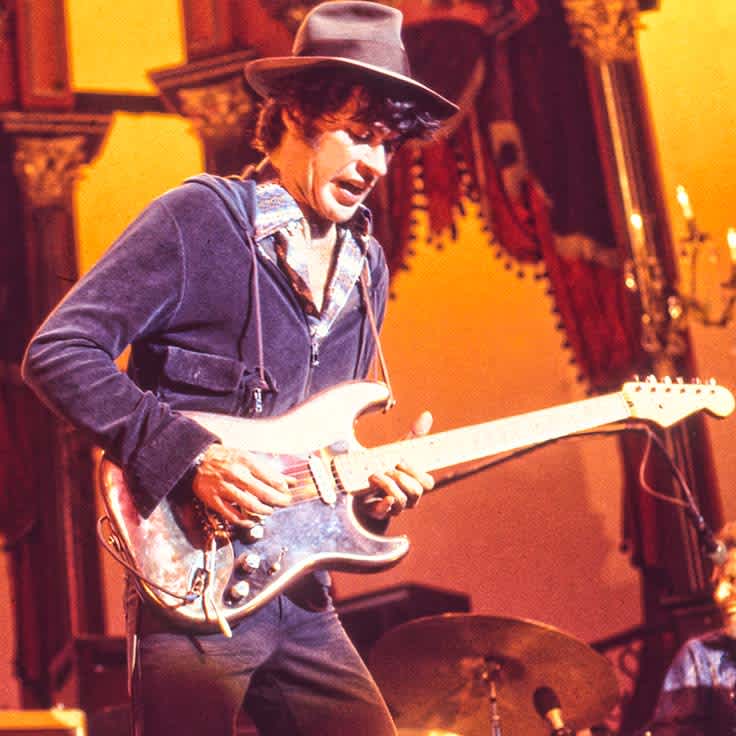
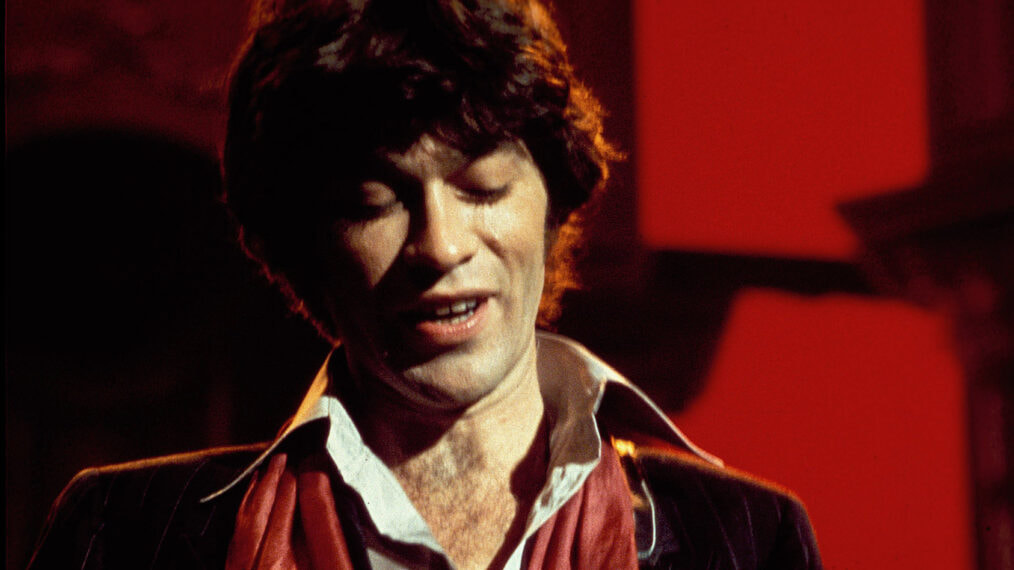

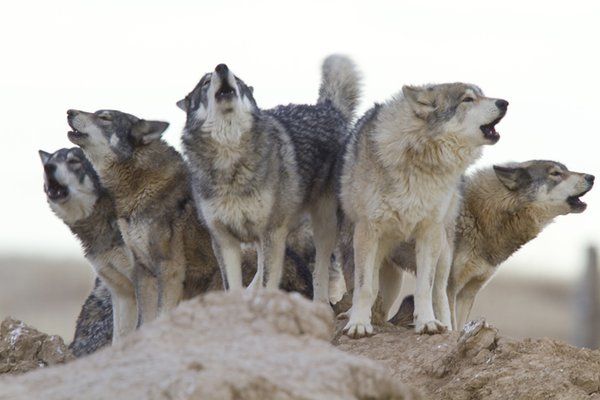
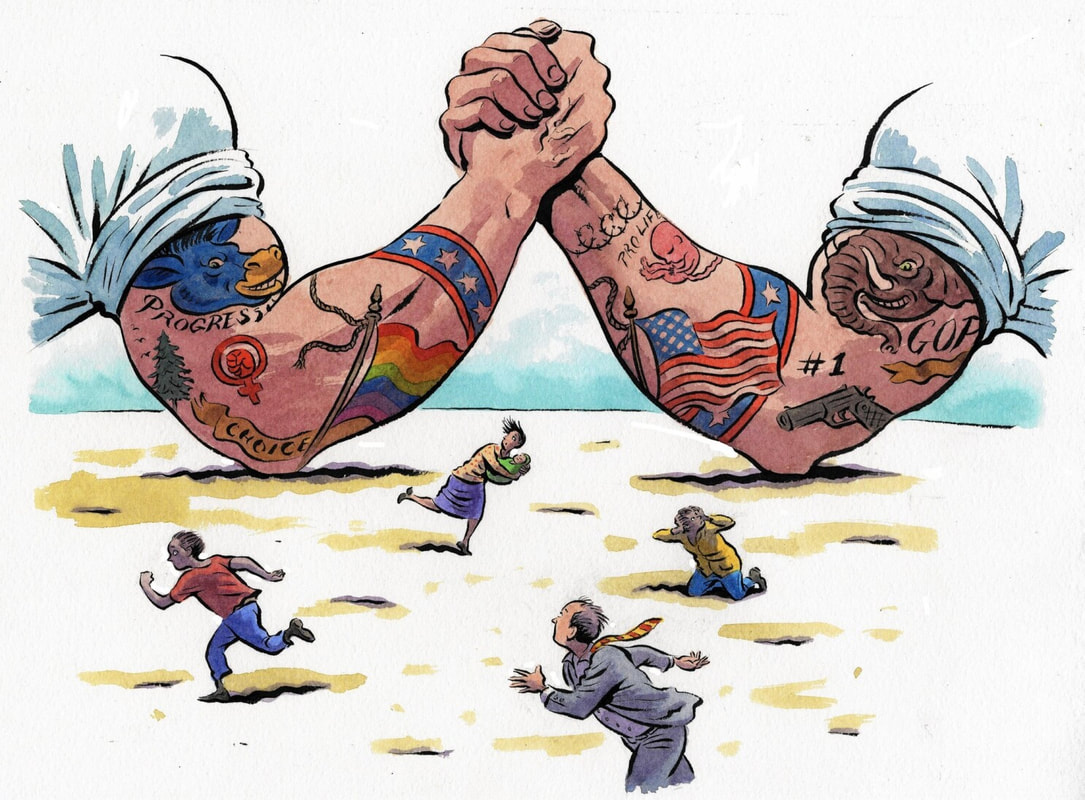

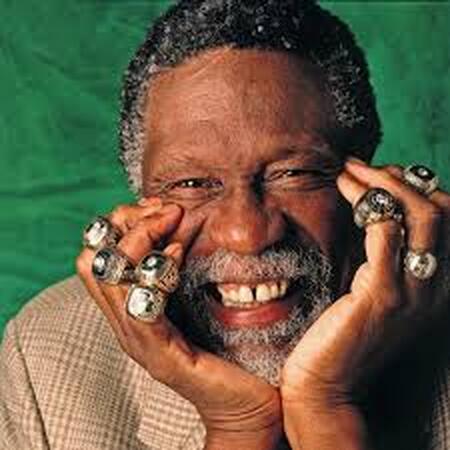
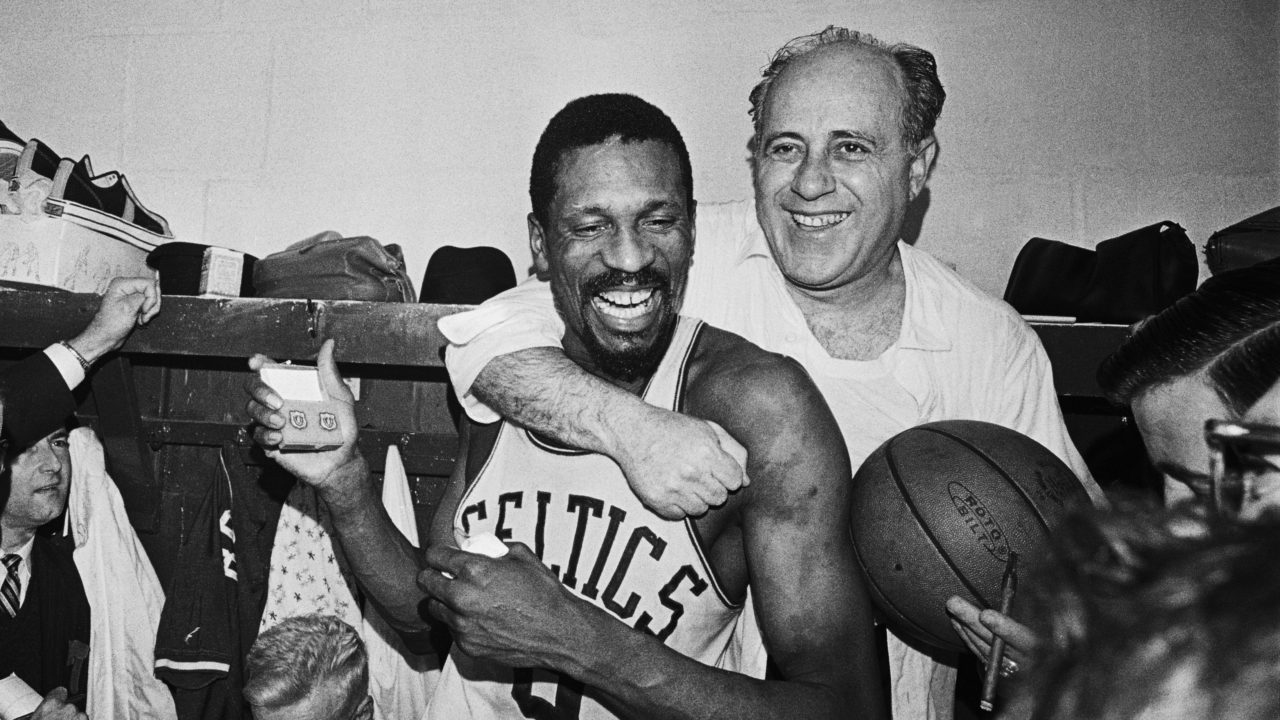

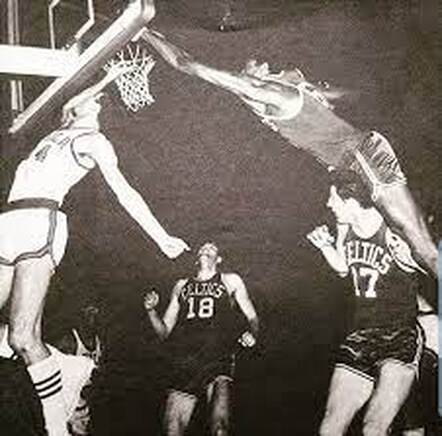

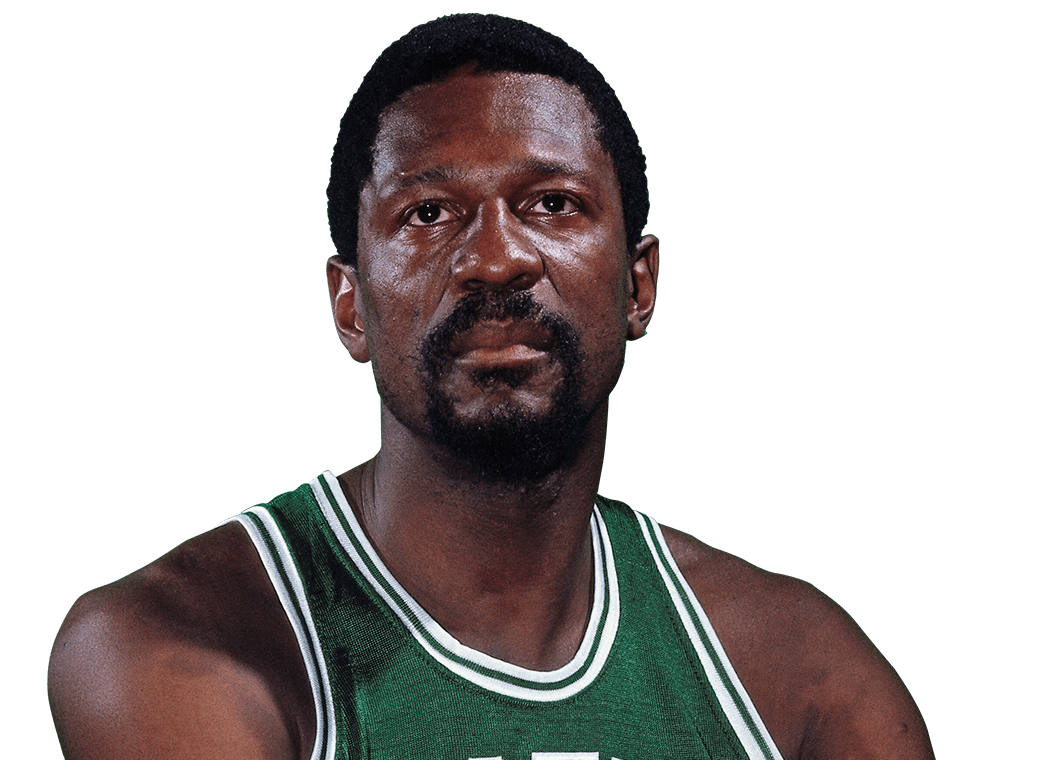
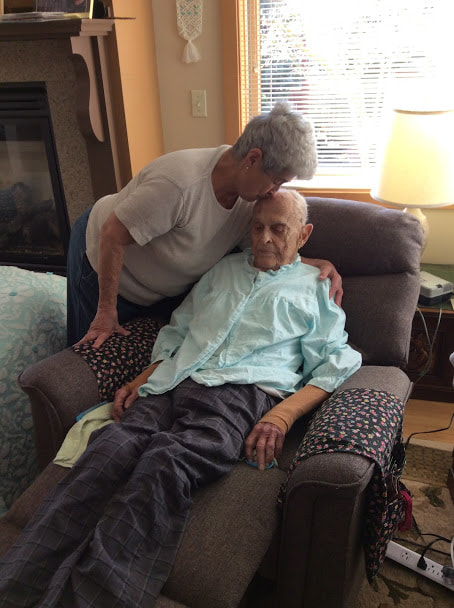



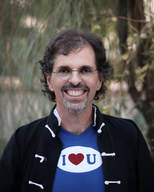
 RSS Feed
RSS Feed
